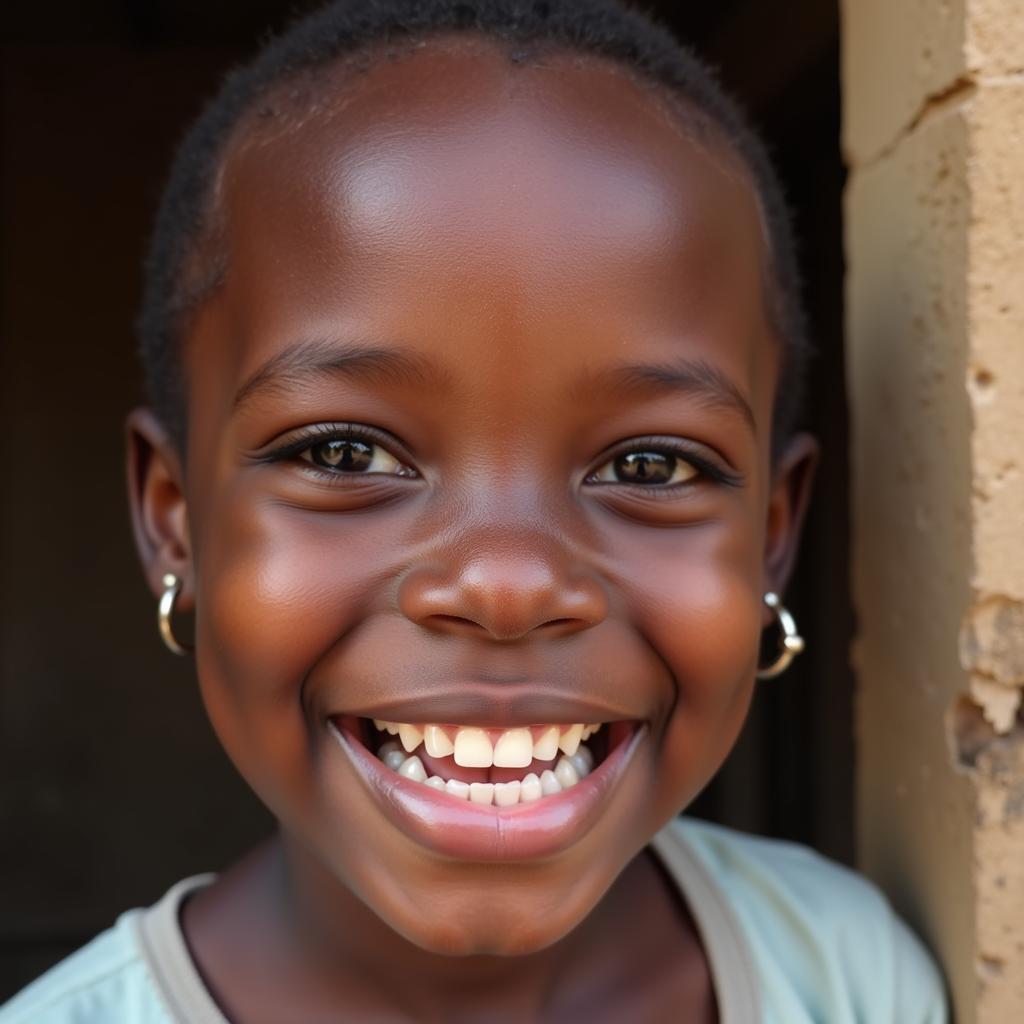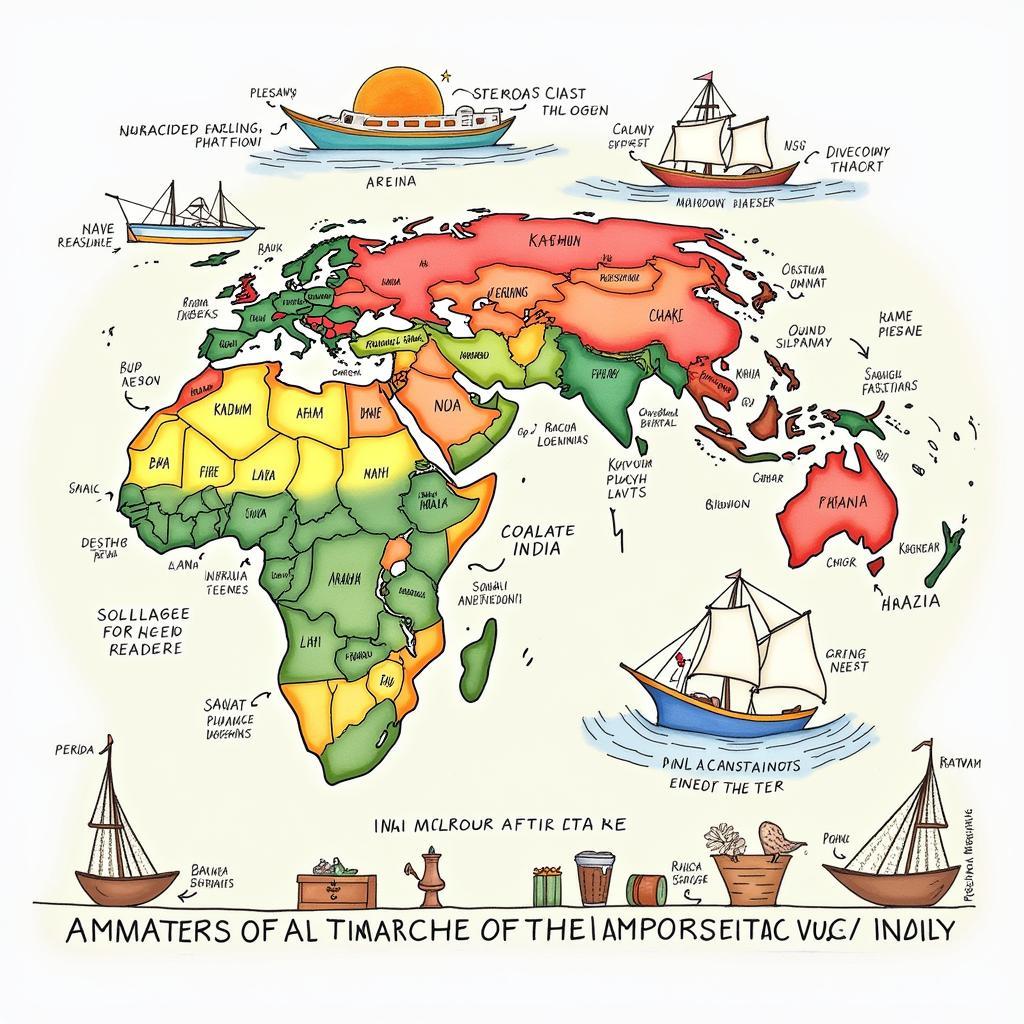Unveiling the Myths: African Child Teeth and Cultural Significance
The appearance of an “African Child Teeth” often sparks curiosity, particularly among individuals unfamiliar with the diverse range of dental patterns found across the African continent. This fascination, while often stemming from genuine interest, can sometimes be fueled by misconceptions and stereotypes. This article delves into the realities of dental variations among African children, exploring cultural significance, debunking myths, and highlighting the beauty of diversity in human features.
Exploring Dental Variations in African Children
Just like hair texture, skin tone, and eye color, tooth shape and size are influenced by a combination of genetic and environmental factors. Africa, with its vast genetic diversity, showcases a wide spectrum of dental patterns. While some children may have teeth that align with commonly perceived notions, many others exhibit unique characteristics that are perfectly normal and healthy.
The Myth of a Singular “African Child Teeth”
It’s crucial to understand that there is no single, homogenous “African child teeth” appearance. Generalizing the dental features of an entire continent inhabited by diverse ethnicities and populations is inaccurate and perpetuates harmful stereotypes. Each group carries its own genetic heritage, leading to a rich tapestry of dental variations across Africa.
Common Dental Features: Separated Teeth and Beyond
One common dental feature observed in some African populations, as well as other populations around the world, is tooth spacing, particularly in the upper front teeth. This spacing, often referred to as diastema, can occur due to various factors, including genetics, jaw size, and the presence of a prominent labial frenum (the tissue connecting the upper lip to the gums).
 African Child with Diastema
African Child with Diastema
Cultural Significance and Traditional Practices
In certain African cultures, dental aesthetics might differ from Western ideals. Tooth spacing, for instance, has been historically associated with desirable traits such as fertility, beauty, and even good fortune. These cultural interpretations highlight the importance of respecting and appreciating diverse beauty standards.
Traditional Tooth Modification Practices
Historically, some African communities practiced tooth modification as a rite of passage, a symbol of beauty, or for social status. These practices, while less common today, varied widely across regions and involved techniques like filing, chipping, or inlaying teeth with decorative materials.
Debunking Myths and Promoting Respectful Curiosity
It’s essential to approach discussions about physical characteristics, including dental features, with sensitivity and respect. Attributing specific dental features solely to race or ethnicity perpetuates stereotypes and ignores the multifaceted factors that contribute to human diversity.
Challenging Stereotypes and Misinformation
Stereotypes about “African child teeth” often stem from a lack of exposure to the diversity of the continent. By sharing accurate information and celebrating the beauty of all dental variations, we can challenge these harmful narratives and promote greater understanding and appreciation for human differences.
[african chew sticks benefits]
Conclusion: Embracing Diversity and Challenging Preconceptions
Understanding the realities of “African child teeth” requires moving beyond simplistic notions and embracing the vast spectrum of dental variations that exist. By appreciating the cultural significance, debunking myths, and promoting respectful curiosity, we can foster a more inclusive world that celebrates the beauty of diversity in all its forms. Let’s continue to learn, unlearn, and relearn, approaching discussions about human features with sensitivity and an open mind.
FAQs about African Child Teeth
1. Is there a specific gene that determines “African child teeth”?
No, there is no single gene responsible for the dental features observed in African populations. Dental variations are influenced by a complex interplay of multiple genes and environmental factors.
2. Are spaced teeth considered a health concern in African cultures?
Not necessarily. While some cultures might associate spaced teeth with positive attributes, it’s essential to prioritize oral health. Regular dental check-ups are crucial for maintaining healthy teeth and gums, regardless of spacing or other variations.
3. Do all African children have noticeable tooth spacing?
No, tooth spacing is not a universal feature among African children. Dental patterns vary greatly, and some children might have perfectly aligned teeth, while others might exhibit spacing or other variations.
4. Are traditional tooth modification practices still common in Africa?
While less prevalent today, traditional tooth modification practices persist in some communities. However, it’s crucial to approach this topic with sensitivity and respect for cultural traditions.
5. How can I challenge stereotypes about “African child teeth”?
Educate yourself about the diversity of dental features and challenge misconceptions when you encounter them. Promote respectful curiosity and celebrate the beauty of all variations.
Need More Information?
For more insights into African culture and heritage, explore these related articles:
- [african hair beads]
- [african chimpanzee wikipedia]
- [african elephant facts for kids]
- [african american orthodontics]
Get in Touch
If you have any questions or need further assistance, please don’t hesitate to contact our dedicated support team:
Phone: +255768904061
Email: [email protected]
Address: Mbarali DC Mawindi, Kangaga, Tanzania.


